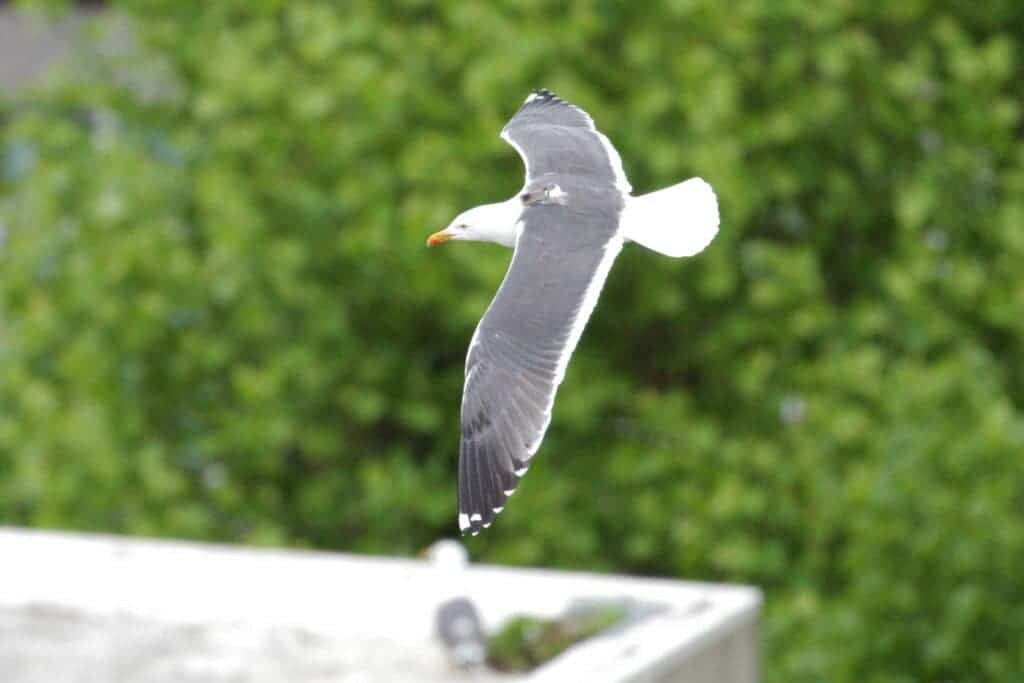Seagulls have become a common (and often unwanted) sight in urban areas. The birds are increasingly moving to cities for the abundant food, up to the point where chip-eating seagulls bothering city dwellers has become a fairly common occurrence. According to a new study, seagulls are even adapting their schedule to better forage off humans.

Cities are unusual habitats. Unlike natural environments, where the interspecies relationships have been chiseled and honed over many generations, cities are noisy, polluted, and weird, built from unwelcoming materials. For most creatures cities are a disaster, completely wrecking any chance of a real habitat. But for a minority of creatures, cities are a godsend.
Just think about rats, seagulls, and roaches — a trio that seems to inhabit every big city on the planet. These creatures (and several others) have not only adapted to urban areas, but they’re often thriving in them. A big part of this adaptation is knowing how to shift their lifestyle based on fluctuations in food sources. Researchers suspected some sort of adaptation must be taking place, but until recently the data had been scarce.
To address this, a team of scientists at Bristol’s Faculties of Engineering and Life Sciences equipped 12 lesser black‐backed seagulls with mini GPS tracker backpacks, recording their behavior at three different settings: a public park, a school, and a waste center. The team also used other observations of gulls at a various number of different sites.
The team found that birds move their foraging patters to closely match the timing of school breaks and the opening and closing times of the waste centre. In other words, they’re not foraging when they’re the hungriest: they’re foraging when they know they have the best chance to find something. Their activity in the park also seemed to correspond with the availability of food sources in the park, but this was not connected to human activity.

This suggests that the birds have the capacity to adapt their foraging patterns and the intelligence to do so, says Dr. Anouk Spelt, lead author of the paper published in Ibis, the International Journal of Avian Science.
“Our first day at the school, the students were excited to tell us about the gulls visiting their school at lunch time. Indeed, our data showed that gulls were not only present in high numbers during lunch time to feed on leftovers, but also just before the start of the school and during the first break when students had their snack. Similarly, at the waste centre the gulls were present in higher numbers on weekdays when the centre was open and trucks were unloading food waste.”
There’s also some good news: seagulls aren’t really planning to steal your chips, they’re more interested in other types of food readily available in parks.
“Although everybody has experienced or seen gulls stealing food from people in parks, our gulls mainly went to park first thing in the morning and this may be because earthworms and insects are present in higher numbers during these early hours,” says Spelt.
It’s also interesting that the number of gulls and the number of people at the school were positively related only during weekdays — during weekends, the relationship was opposite. So humans can both attract and deter seagulls, based on the birds’ perception. A weekday behavior was also observed at the waste center where during working days, waste was unloaded regularly (up to 15 times a day) during the opening times. At the weekend, however, no new waste was unloaded due to the center being closed, and birds were less likely to come to the center. At both locations, the gulls were observed waiting on the surrounding rooftops before school breaks and before waste was unloaded, implying that they were waiting there specifically for food to become available.
The behavioral flexibility of the gulls also impresses co-author Dr. Shane Windsor, who concludes:
“With this study in Bristol we have shown that gulls in cities are able to adapt their foraging schedule to make best use of food resources depending on their availability. Some gulls even used all three feeding grounds in the same day, suggesting they might track the availability to optimise their energy intake. These results highlight the behavioural flexibility of gulls and their ability to adapt to the artificial environments and time schedules of urban living.”
Journal Reference: Spelt et al. Urban gulls adapt foraging schedule to human‐activity patterns. https://doi.org/10.1111/ibi.12892


